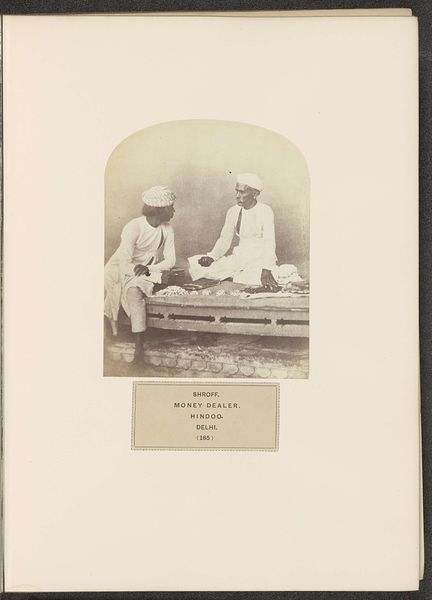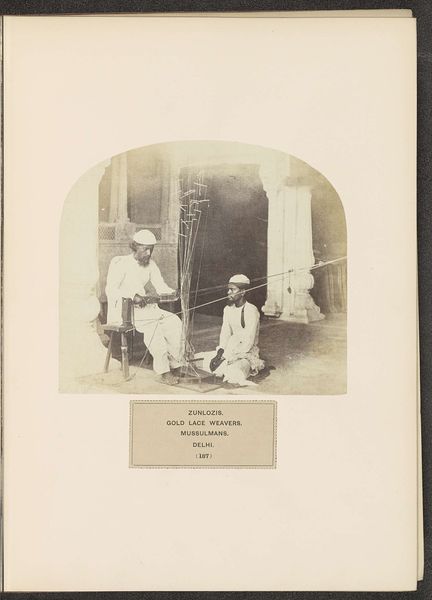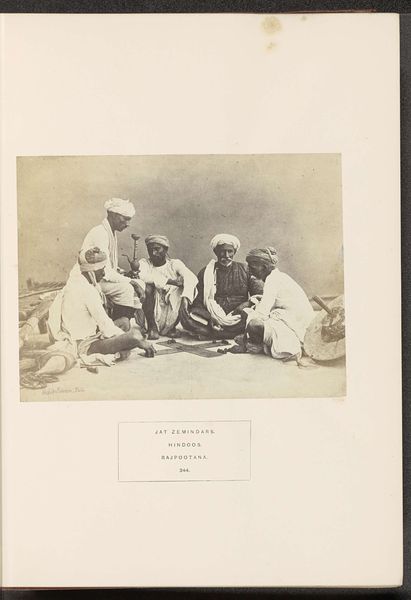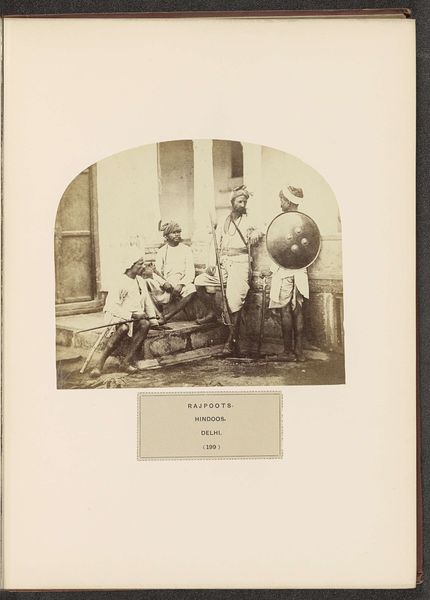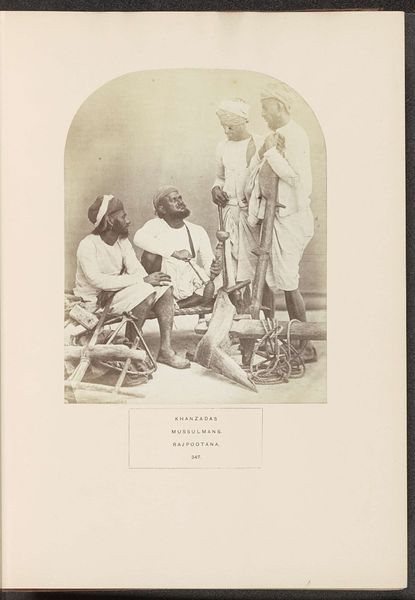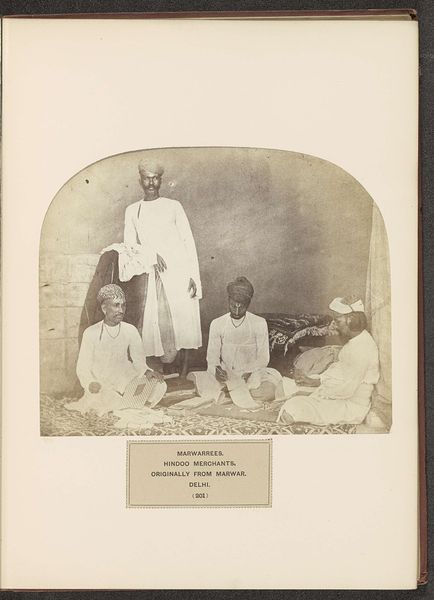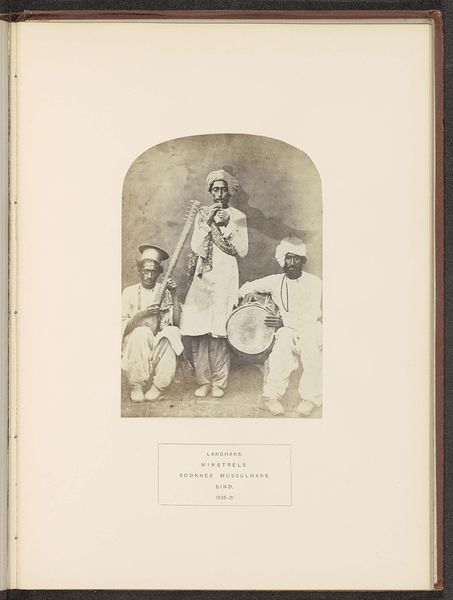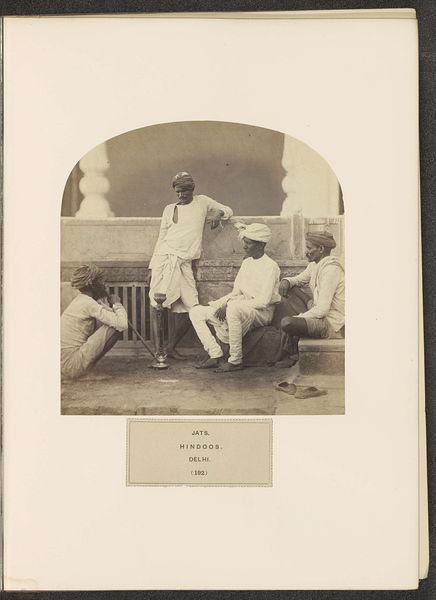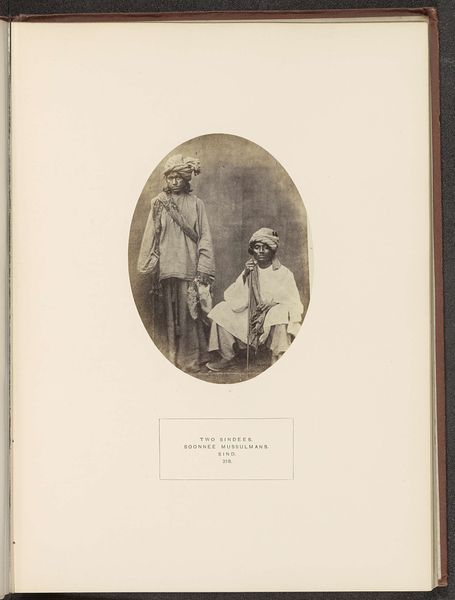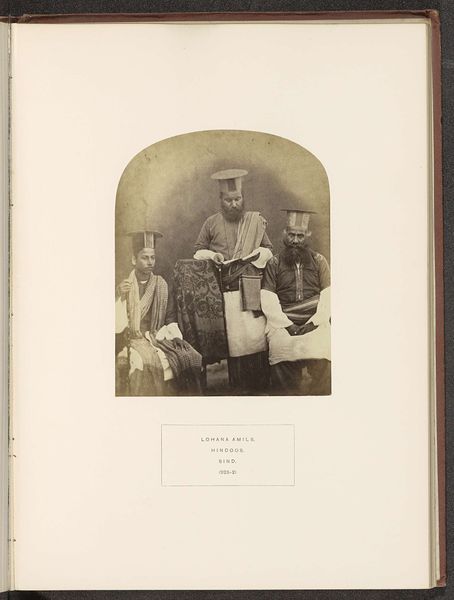
photography, gelatin-silver-print
#
portrait
#
photography
#
orientalism
#
gelatin-silver-print
#
islamic-art
Dimensions: height 155 mm, width 209 mm
Copyright: Rijks Museum: Open Domain
This photograph of three Muslim lawyers in Delhi was produced by Shepherd & Robertson, using the wet collodion process. This complex technique, popular in the mid-19th century, involved coating a glass plate with light-sensitive chemicals, exposing it in the camera while still wet, and then developing it immediately. Looking closely, the sepia tones and soft focus of the image are inherent to this photographic method. The meticulous, almost alchemical steps required speak to a time when photography was as much craft as science. Each print was a unique object. But consider also the social context. Photography, like law, was a tool of empire. While it offered a seemingly objective view, the act of photographing ‘native’ populations was deeply embedded in colonial power dynamics. This image, with its careful staging and formal composition, is more than just a record; it’s a carefully constructed representation, shaped by both the photographer's craft and the politics of the time. Appreciating these nuances challenges any simplistic view of photography as a purely objective medium.
Comments
No comments
Be the first to comment and join the conversation on the ultimate creative platform.

